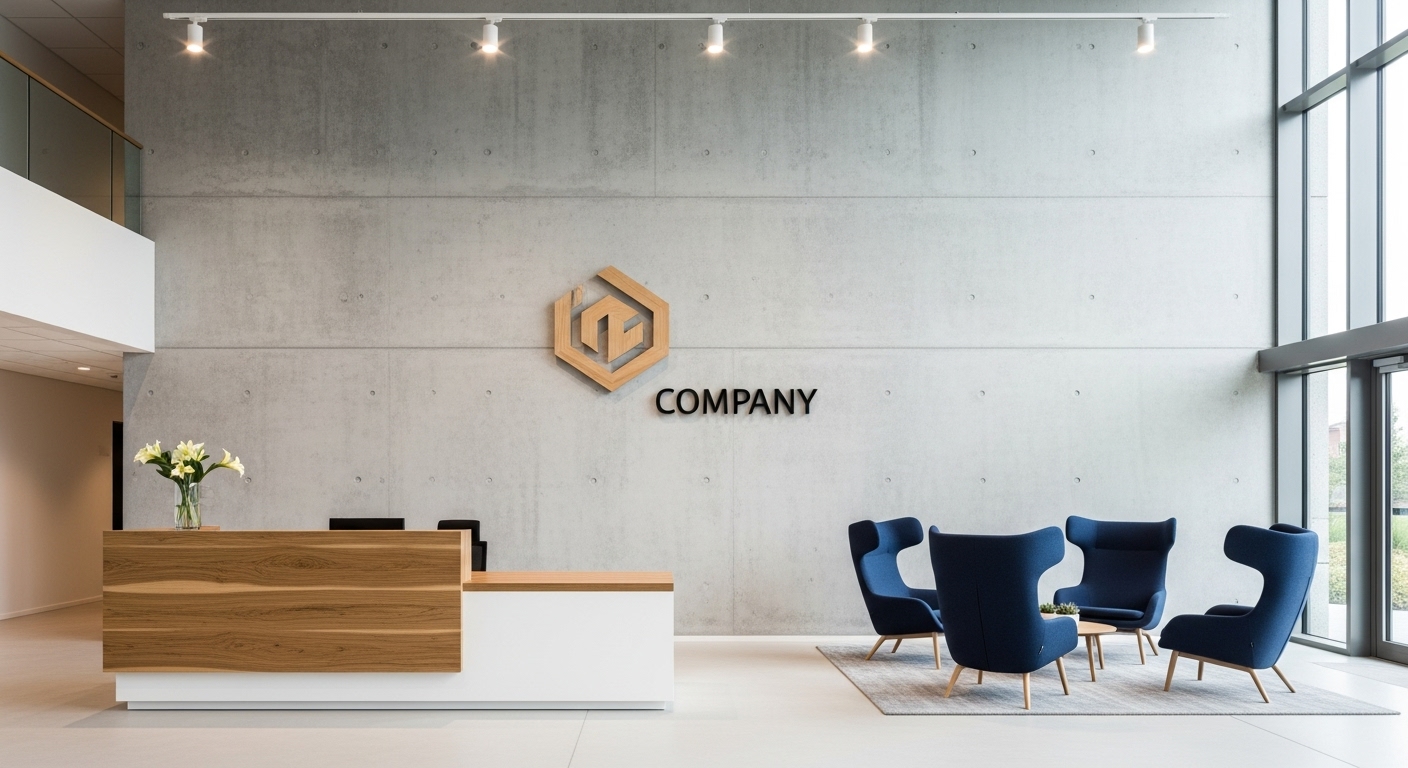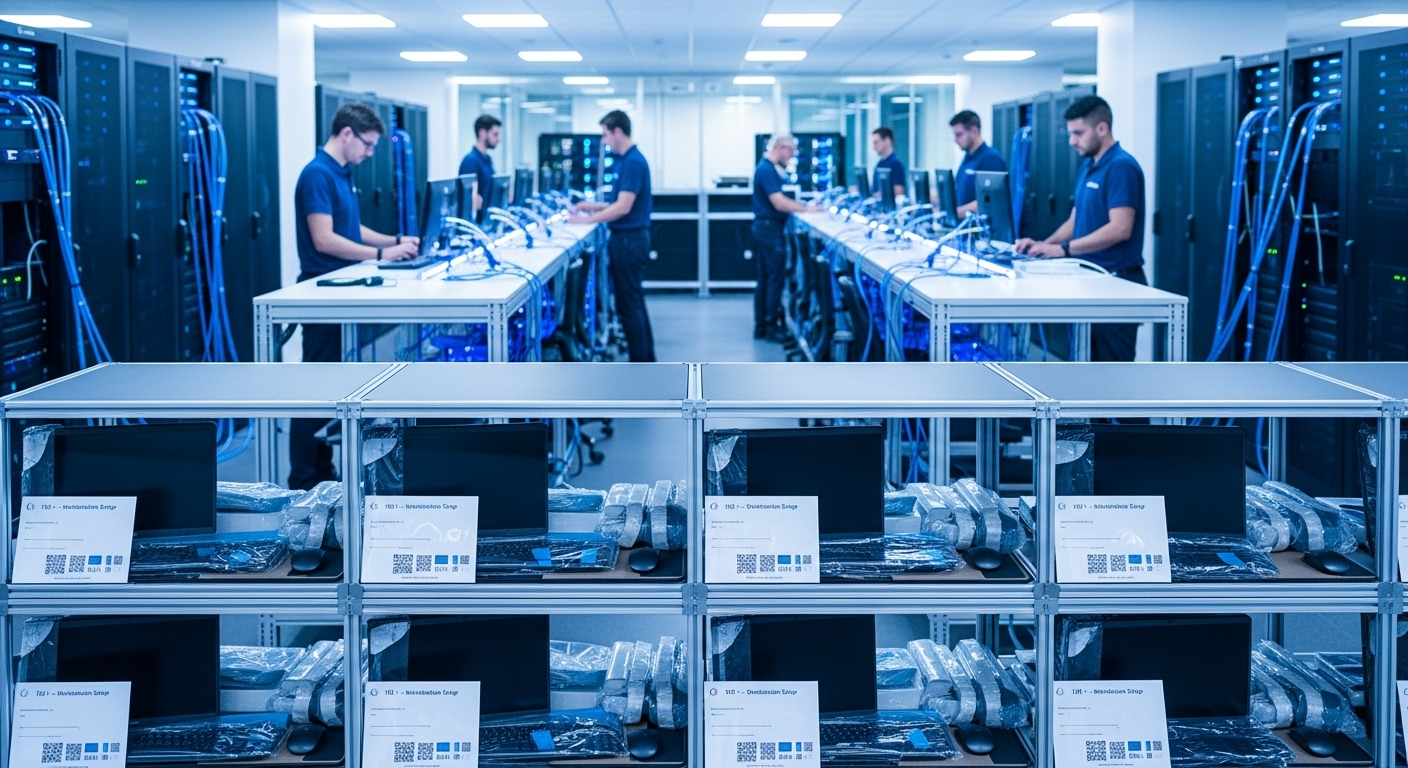In today’s competitive landscape, a brand is far more than a logo, a color palette, or a clever tagline; it’s a comprehensive experience. While companies invest heavily in their digital presence, one of the most powerful brand touchpoints is often overlooked: the physical workspace. Your office is not merely a place for employees to work; it’s a living, breathing representation of your company’s mission, vision, and values. It’s a physical manifesto that communicates your culture to every employee, client, and partner who walks through the door. Moving beyond generic corporate interiors to create a space that is intentionally and authentically branded can transform it from a cost center into a strategic asset. This guide will walk you through the essential steps for translating abstract company values into tangible workspace design, creating an environment that doesn’t just house your team, but actively inspires and aligns them with your core purpose.
1. Decoding your brand DNA for spatial translation
Before a single paint color is chosen or a piece of furniture is ordered, the foundational step is to deeply understand and articulate your brand’s core identity. This process goes beyond marketing slogans; it’s an archaeological dig into your company’s soul. Start by codifying your mission, vision, and, most importantly, your core values. If a core value is ‘transparency,’ what does that look like in a physical space? It might translate to glass-walled meeting rooms, open-plan workstations, and accessible leadership offices rather than corner suites. If your brand personality is ‘innovative and bold,’ your design language should reflect that through dynamic shapes, unconventional materials, and cutting-edge technology, avoiding safe, traditional choices. The goal is to create a design brief that translates abstract concepts into concrete design directives. For example, ‘collaboration’ could mean fewer individual offices and more varied communal spaces, from casual soft-seating areas to high-tech brainstorming rooms with writable surfaces. This initial decoding phase is critical; without this strategic foundation, any design choices will be purely aesthetic rather than meaningful, resulting in a space that is decorated but not truly branded.
2. The psychology of color, material, and light
Once you have a clear understanding of your brand’s DNA, you can begin translating it into the sensory language of design. Color is one of the most powerful and immediate tools. It’s not just about splashing your logo’s primary color everywhere. Instead, use your brand palette strategically to evoke specific emotions and guide behavior. For instance, blues and greens can create a sense of calm and focus, making them ideal for concentration zones, while warmer colors like yellow and orange can stimulate energy and creativity in collaborative areas. Materials are equally important in telling your brand’s story. A tech startup aiming for a disruptive, industrial feel might use raw concrete, exposed ductwork, and steel. In contrast, a wellness brand would likely lean towards natural materials like light wood, stone, and an abundance of plants to communicate its commitment to nature and well-being. Lighting completes this sensory triad. It’s not just about visibility; it’s about creating atmosphere. A dynamic lighting scheme that changes throughout the day can support employees’ circadian rhythms, while a mix of focused task lighting and softer ambient light allows for different types of work. Combining these elements thoughtfully ensures your workspace communicates your brand narrative on a subconscious level, making employees and visitors ‘feel’ your brand identity the moment they enter.
3. Beyond the logo: integrating brand assets creatively
One of the most common mistakes in office branding is the overuse of the company logo. While logo placement is important, effective spatial branding integrates brand assets in more subtle, creative, and immersive ways. Think of your brand guidelines as a kit of parts. Your brand’s typography can be used for more than just documents; it can be rendered in three dimensions for wayfinding signage or as a large-scale graphic installation. The patterns or shapes from your visual identity can be applied to acoustic panels, window films, carpets, or custom textiles, creating a cohesive and layered visual experience. This is also an opportunity to tell your company’s story visually. A timeline of company milestones can become a compelling mural in a high-traffic corridor. Your mission statement, instead of being hidden in a handbook, can be artfully integrated into a reception area wall. Commissioning local artists to create pieces that reflect your company’s values is another powerful way to connect with the community and create a unique environment. The key is to treat the workspace as a canvas for storytelling, using your brand’s visual elements to create touchpoints that consistently and creatively reinforce your identity.
4. Furniture as a functional brand statement
Furniture is a critical component of workspace design that is often chosen for function and budget alone, yet it plays a significant role in shaping behavior and expressing brand values. The furniture you select makes a powerful statement about what your organization prioritizes. For example, a company that champions agility and flexibility should opt for modular, movable furniture—desks on casters, lightweight partitions, and a variety of seating options that allow teams to reconfigure their space on the fly. This physically enables the agile work style the brand promotes. Conversely, a law firm valuing tradition and stability might choose substantial, timeless pieces made from high-quality wood and leather to project an image of permanence and authority. If collaboration is a core tenet, investing in large communal tables, comfortable lounge areas, and well-equipped project rooms sends a clear message that teamwork is encouraged and supported. Even the ergonomics of your chairs can be a brand statement, communicating that you value the well-being and health of your employees. By viewing furniture not just as an object but as a tool for facilitating desired behaviors, you can ensure your workspace actively supports and reflects the culture you aim to build.
5. Technology and interactive brand experiences
In the modern workplace, technology is an essential layer of the brand experience. Seamlessly integrating technology into the physical environment can enhance functionality while powerfully reinforcing your brand’s identity, especially if you are in the tech sector. This goes far beyond providing Wi-Fi. Consider digital welcome screens in the lobby that display not just a welcome message, but also dynamic content like company news, team achievements, or real-time data visualizations relevant to your business. Interactive displays can tell your brand story in an engaging way or be used as collaborative tools for brainstorming sessions. Smart room booking systems that integrate with employees’ calendars can streamline workflows, reflecting a brand that values efficiency. Even the audio experience can be branded, with curated playlists in common areas that match the desired energy level of the space. For companies with a global presence, high-quality video conferencing technology that makes remote collaboration feel effortless demonstrates a commitment to connectivity and inclusion. By thoughtfully embedding technology, you can create a responsive and intelligent environment that shows your brand is forward-thinking and invested in providing a world-class experience for its team.
6. Wayfinding and environmental graphics that guide and inspire
Wayfinding and environmental graphics are the narrative voice of your workspace. Their primary function is to orient and direct, but their potential extends far beyond that. Strategic wayfinding can turn a simple journey through the office into a brand-reinforcing experience. Instead of generic labels, consider naming meeting rooms after company values, industry pioneers, or significant company milestones. This simple act transforms functional spaces into daily reminders of your culture and history. The design of the signage itself should align with your brand’s visual identity, using your typography, color palette, and iconography to create a cohesive journey. Large-scale graphics can be used to define different zones within the office, visually separating quiet, focused work areas from energetic, collaborative hubs. These graphics can feature motivational quotes that align with your company ethos, abstract designs derived from your brand assets, or images that tell the story of your customers and the impact of your work. Effective environmental graphics do more than decorate—they inform, inspire, and immerse people in your brand’s world, making the physical space an active participant in communicating your culture.
7. Measuring the impact: from employee engagement to client perception
Branding your workspace is a significant investment, and like any investment, its impact should be measured. Success isn’t just about aesthetics; it’s about tangible outcomes. One of the primary metrics is employee engagement and satisfaction. Post-occupancy surveys are crucial for gathering quantitative and qualitative feedback. Are employees using the new collaborative spaces? Do they feel the environment supports their work and reflects the company culture? Tracking metrics like employee retention rates and even productivity can also provide insight. Another key area is talent acquisition. A well-branded office is a powerful recruiting tool. Ask new hires about the role the physical space played in their decision to join the company. Client and partner perception is also vital. A branded environment should make a strong, positive first impression that communicates professionalism, creativity, and a clear sense of identity. Gather anecdotal feedback from visitors about their experience. As business strategist Peter Drucker famously said,
“What gets measured gets managed.”
By establishing key performance indicators before you begin, you can demonstrate the ROI of your workspace design and make data-informed adjustments over time, ensuring your physical manifesto continues to serve your strategic goals effectively.
Ultimately, transforming your office into a physical manifesto is an exercise in authenticity. It’s about ensuring that the environment where your team spends its time is a true and powerful reflection of what your organization stands for. This process moves beyond interior design and becomes an act of strategic brand-building. By first decoding your brand’s core DNA and then translating it through the deliberate use of color, materials, furniture, and technology, you create more than just a beautiful office. You build a strategic asset that reinforces culture, attracts and retains top talent, and leaves a lasting impression on every person who walks through your doors. A well-executed branded space doesn’t just tell your brand story—it invites your employees and clients to live inside it. In a world where culture is a key differentiator, your workspace is one of the most powerful tools you have to build, nurture, and showcase the very values that make your company unique. It’s a declaration of who you are and a catalyst for who you want to become.





